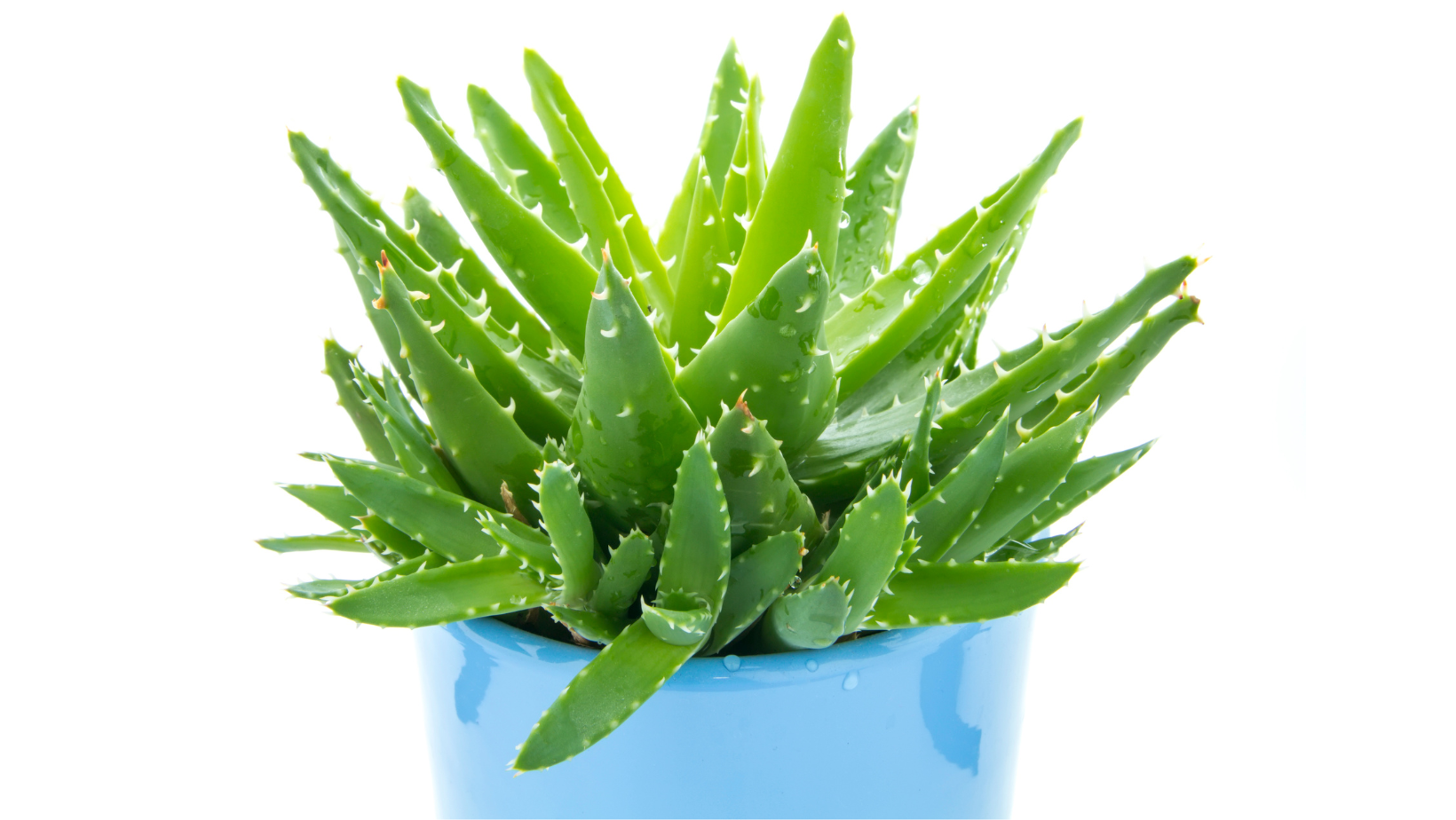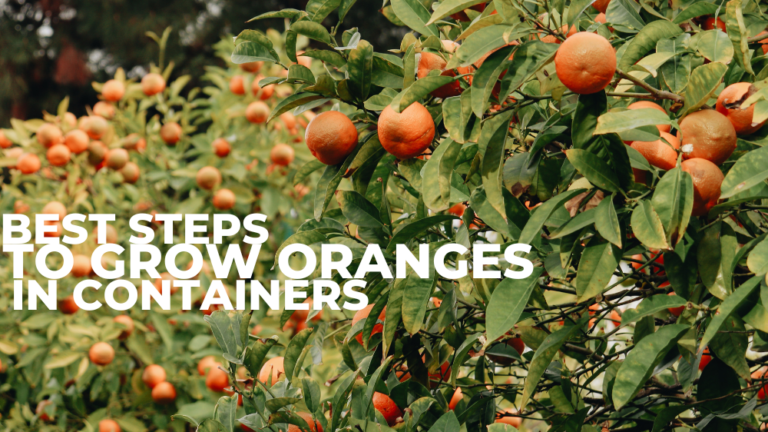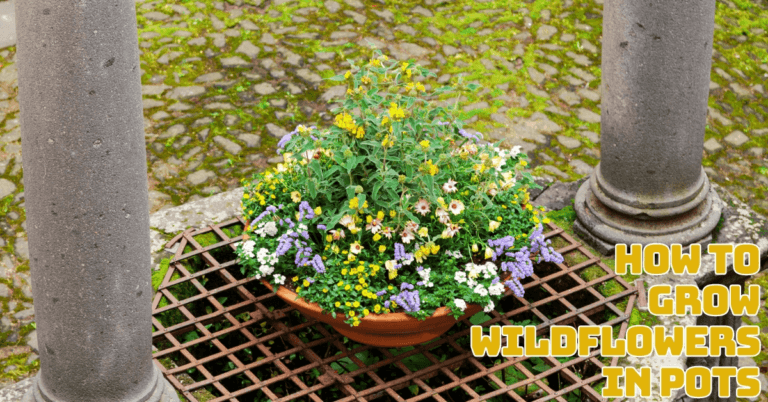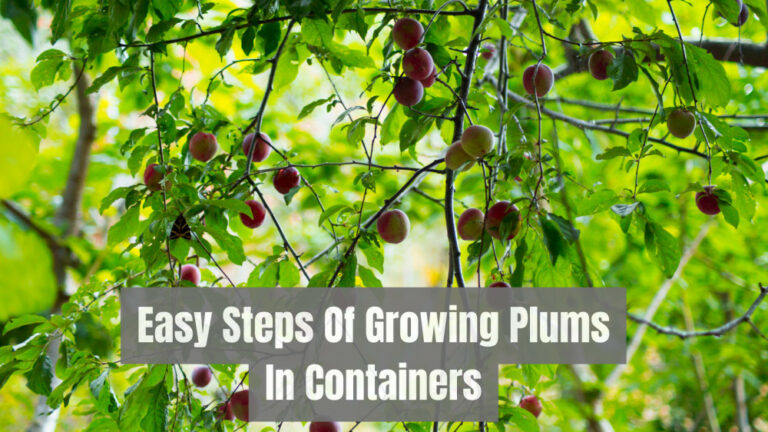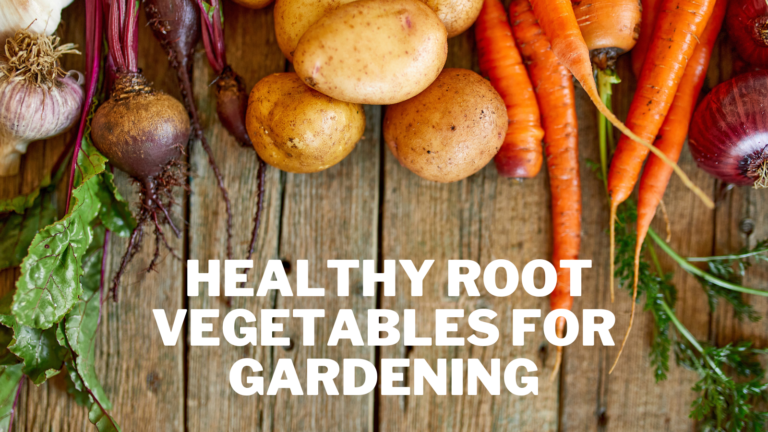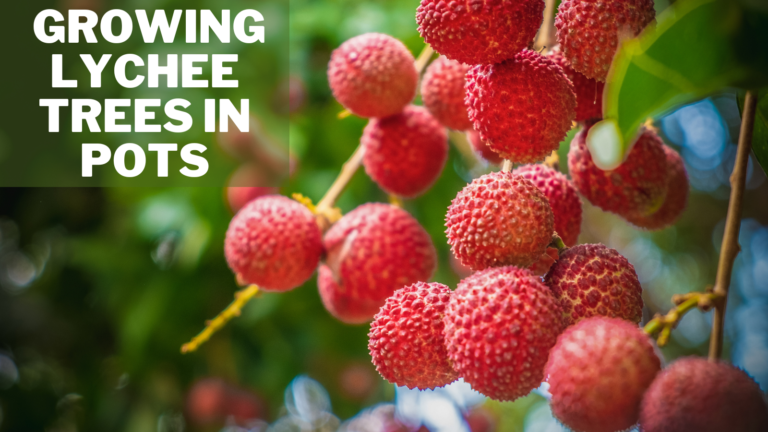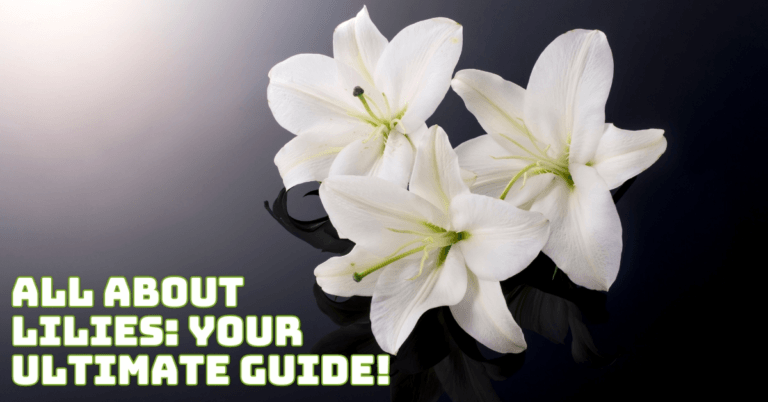Easy Steps To Grow Aloe Vera In A Container
Easy Steps To Grow Aloe Vera In A Container
You already know how useful it is to have an Aloe vera plant nearby if you've ever cracked open a leaf and applied the aloe gel to a sunburn.
Aloe vera (Aloe vera), a beautiful and simple-to-grow succulent, thrives in containers both inside and outside.
According to the Missouri Botanical Garden, this plant has been used for centuries as a source of medicine and a decorative plant grown in U.S. Department of Agriculture plant hardiness zones 10 through 12.
Aloe vera can tolerate a wide range of growing conditions as long as you're careful not to overwater it, and it will continue to be a beautiful houseplant or patio container plant.
According to the Farmer's Almanac, place the pot in bright, indirect sunlight rather than full sun, which can cause the plant to turn yellow and dry out. Follow My steps to grow Aloe vera in a container.
History Of Aloe Vera
Aloe vera has been used in herbal medicine for more than 5,000 years. Every civilization has used the plant as a treatment without exception. Around 3000 B.C., Aloe vera is mentioned in Chinese and Sumerian writings.
Aloe vera was revered as “the plant of immortality” by the Egyptians during the time of the pharaohs.
The anti-inflammatory and pain-relieving effects are mentioned in writing on papyrus. The pharaoh referred to it as the “elixir of eternal life.” Aloe vera was allegedly used daily by Cleopatra.
Aloe vera has long been called the “flower of the desert” in Arabic culture. Aloe vera was first sold in the Middle East by Arabs.
Places like India, China, and Malaysia have recognized its medicinal value.
Famous doctors from the Greco-Roman period, including Aristotle, Hippocrates, and Dioscorides, already emphasized the benefits of these plants for treating wounds, boils, eye conditions, skin conditions, preventing hair loss and treating genital ulcers.
According to legend, Aristotle convinced Alexander the Great to invade the island of Socotra in order to take advantage of the aloe plantations there, which would have allowed him to treat his soldiers.
The Jibaro Indians revered Aloe vera as a sacred plant and referred to it as the “Doctor of the Sky” and the “Fountain of Youth.”
Popular Types Of Aloe Vera
According to the World Checklist of Selected Plant Families, approximately 580 different species of Aloe vera are known to exist today. To grow Aloe vera in a container, 10 of the most well-liked ones are discussed here.
Aloe Rubroviolacea
The Arabian Aloe is drought-resistant. It flourishes in gardens, patios, patio pots, beds, and borders.
The plant has a stunning appearance with its blue-green leaves and the reddish teeth surrounding them.
In direct sunlight, the leaves turn purple. It is disease-free and produces dense spikes of red flowers in the winter.
Aloe Barbadensis Miller
This is one of the most prevalent types and is well-liked because of its curative qualities. The gel created when the leaves are cut helps many skin and hair problems and burns heal quickly.
This plant produces yellow flowers and white spots on the leaves, which usually disappear as the plant ages.
Aloe Ferox
Cape Aloe is another name for Aloe Ferox. Each leaf has spines and teeth, particularly in the lower portion.
The plant produces large, brilliant orange flowers. In addition to food supplements, the clear gel of the Cape Aloe is used in burn creams and other skincare items.
Aloe Crosby’s Prolific
Long, translucent teeth can be seen on the leaves of this dwarf or miniature aloe. The plant produces orange-red flowers, and when exposed to sunlight, the leaves turn red, adding beauty to your landscape design. Both beds and containers can be used it.
Aloe Cameronii
Its vibrant red copper leaves are the primary factor in the Red Aloe's popularity. The amount of sun and water exposure determines the colour of the leaves. It begins to develop reddish-orange flowers in the late fall.
Aloe Aculeata
This plant is from South Africa and is called Red Hot Poker Aloe. The plant's spines and teeth are called “aculeata,” which means “prickly.”
Between August and October, it blooms with orange-yellow flowers. The winter rain can grow in beds and containers if it is kept out.
Aloe Striata
Flat, broad, toothless leaves on the coral aloe are more of a pale green colour that turns pink when exposed to sunlight. From late spring to early winter, coral-orange flower tubular clusters bloom.
Aloe Aristata
The Torch Plant's or Lace Aloe's leaves are light green in the shade but turn dark green in direct sunlight. The edges of the incurved leaves are lined with white teeth and have tufted tips.
In the winter, it clumps and produces reddish-orange flowers. The afternoon sun is particularly harsh on this plant, so it prefers some shade.
Aloe Plicatilis
A Fan The arrangement of the aloe leaves resembles a fan. Typically, the edges of the light blue-green leaves are orange.
Every cluster of leaves on this shrub-like arrangement produces a bright pink flower. They draw birds because they are full of nectar.
Grow Aloe Vera In A Container
Locations To Grow Aloe Vera
Only the warmest regions are able to support this moisture-rich plant year-round outdoors (zones 9 to 10).
Aloe thrives indoors as a houseplant in some places, though some gardeners move it outside for the summer.
During the warmer months, place aloe indoors in an area with bright indirect light. It's best to place a table next to the east or south-facing window. In the hottest months, offer shade from the sun in southern and high desert areas.
Provide some light shade when growing aloe outside, especially during the hottest times of the day.
A covered patio or porch is a great place to grow aloe outdoors. Aloe should be brought inside once the temperature drops below 50°F.
Aloe should be planted in some shade in zones 9 to 10, where it can survive all year outdoors.
The phrase “All is well: we have aloe on board” is attributed to Christopher Columbus, who always tried to bring aloe on his voyages.
After it was established that Aloe vera healed burns suffered by victims of Hiroshima and Nagasaki's nuclear explosions, its benefits were again discovered at World War II's conclusion.
The gel's ability to be transported internationally stabilized in 1968, but for a few decades, synthetic drugs and modern medicine managed to surpass it.
It is now accepted by science and has reemerged in the field of natural medicine: It qualifies as a novel food, a functional food, and a dietary supplement. Today, cosmetics are the main application.
Grow Aloe Vera In Containers From Seeds
After four years, the Aloe vera plant begins to produce seeds.
The plant produces seeds after it blooms. Take the seeds out of the cured flowers. The seeds are also available in retail outlets.
Plant the seeds in potting soil or soil that has been amended with compost, horticultural sand, peat, and perlite.
Place containers indoors or outdoors at 23°C, keeping the soil moist.
Aloe seeds sprout in two to three weeks. You can re-pot seeds or continue growing in the same containers once they reach a height of 1 inch.
Container Requirements
The ideal container for aloe plants is a small, wide-open one. The Aloe vera plant's roots spread horizontally, so pick a wide container with little depth.
The soil will remain wet and unused if you select deep containers because the roots won't be able to reach the bottom of the container.
Aloe roots should cover two-thirds of the container, and soil should cover the remaining three-quarters.
More soil in the container will keep the soil moist for a more extended period of time because Aloe plants don't like more water.
Additionally, an aloe plant doesn't need exceptionally moist soil. Aloe plants require very little water. Purchase a container the Aloe plant roots can fit comfortably.
A plastic container is the best option in a hot, humid climate. If you live in a cold climate, clay or terracotta are the best materials.
The container needs to have practical drainage holes. Gravel should be layered at the bottom of the container by 1 inch. Use a saucer for the pot.
Sunlight Requirements
Each day, 8–10 hours of sunlight are ideal for Aloe vera plants. Although they thrive in warm or hot climates, they can endure cooler months by entering a more dormant state. However, they could be harmed if exposed to temperatures below 25°F (-4°C).
The best hardiness zones for keeping Aloe vera outdoors all year are 9, 10, and 11. If you live in a different climate zone, you might want to keep your Aloe vera outside for most of the year and bring it inside before the first frost.
If you live in the northern hemisphere, windows facing west or south will receive the most sunlight; if you live in the southern hemisphere, windows facing west or north will.
The plant can survive in hot climates thanks to its adaptations, but it is still possible to burn it. If the leaves turn brown, move them to a spot that receives some light shade.
Soil Requirements To Grow Aloe Vera Plant In A Container
Regular potting soil is not suitable for growing Aloe vera because it has a special adaptation for growing in rocky soils.
The roots of Aloe vera cannot tolerate the amount of moisture that regular potting soil retains.
Aloe vera leaves typically start to turn brown or yellow when planted in regular, unimproved potting soil as a sign of stress from damp conditions and eventually die from root rot.
If you don't have access to succulent and cactus soil, the next best option is to plant Aloe vera in regular, peat-free potting soil that has been improved with perlite, grit, or sand.
As they more closely resemble the gritty soil that Aloe vera prefers, perlite and horticultural grit are better soil amendments for Aloe vera than sand because they more accurately provide an aerated structure and guarantee good drainage.
Ensure the mixture is at least 1 part potting soil to 1 part horticultural grit to provide your Aloe vera with the proper drainage and prevent root rot.
To reduce the risk of root rot and replicate the preferred lower nutrients of Aloe vera's native soil, this guarantees that the soil drains well and does not retain as much moisture for too long. Proper soil mix will help you to grow Aloe vera in a container perfectly.
Water Requirements
Give the aloe plant a few days to heal any roots that may have been harmed during planting before you begin watering.
Root rot is more likely to develop when damaged roots are watered. Aloe plants can withstand periods without water because they store much water in their leaves. If you want to be extra cautious, water it lightly the first one or two times.
Aloe plants will grow fastest with routine watering during the summer or whenever the weather is warm and sunny.
Do not water aloe plants until the soil has dried to a depth of 3 inches because it is much simpler to overwater aloe plants than to allow them to completely dry (7.5 cm).
Aloe plants frequently go dormant when the weather is cold for an extended period or during the winter. Only water them once or twice a month during this time unless you are keeping them in a heated room year-round.
Propagating
- Plants of Aloe vera can be easily multiplied by stem cuttings and division.
- You must separate the offsets from the mother plants' stems to propagate from them.
- Around the base of the plants, Aloe vera offsets proliferate. These are also referred to as plant babies.
- Remove the offsets and leave them in a warm, dark room for 48 hours to allow the callus to form.
- Once the offset end is dry, plant the roots in appropriate containers because the callus protects the roots from rotting.
- Plants shouldn't be watered until the roots are strong and growing.
- Transplant the Baby Aloe Plants
Around the larger mother plant, mature aloe plants produce smaller plants known as babies or pups.
Wait until the aloe babies are about 3 inches tall before gently digging them up for transplant. (You might need to trim the stem that connects the pup to the mother plant; if so, be careful not to trim any of the baby plant's roots.)
Each newborn should be placed in a small pot (about 2 inches in diameter), with the soil covering the base of the first leaf if the soil dries out after two days, water once more and once a week afterward. You can move the baby plant to a bigger pot as it gets bigger.
Fertilizer Requirement
Plants growing Aloe vera don't require a lot of feed. During the spring, give the plant a half-dose of liquid fertilizer with an NPK ratio of 10:40:10. Feed the plant with specially formulated fertilizer every six weeks to encourage blooming.
Very little feed is required for aloe plants; too much feed can be harmful. Instead of chemical fertilizers, it is advised to use organic ones. Purchase succulent organic fertilizer for healthy plant growth.
Natural liquid fertilizers for aloes include liquid kelp and fish emulsion.
In the fall and winter, avoid fertilizing your Aloe vera plants.
Temperature Required For Aloe Vera
Aloe vera thrives in a typical indoor environment. All aloe plants can withstand summer temperatures of 40° to 50°F.
Aloe plants also do poorly in temperatures below 10 °C in the winter. Aloe plants can withstand hot, dry winds and outside. 13° to 27°C is ideal for growing Aloe vera in containers.
Harvesting Aloe Vera
Aloe leaves are used for their clear gel's soothing, anti-inflammatory, and wound-healing properties.
Break or cut a piece off the lowermost leaf's tip to harvest aloe. The cut leaf might ooze for a short while, but the aloe's natural latex should seal the wound in a few hours.
Take another piece from the same leaf whenever you need more until you've finished it all. Pick an entire leaf if you require a lot of clear gel.
Peel back the leaf's green top and cut away the leaf's outer spikey edges to reveal the gel. Keep the harvested leaf wrapped in plastic in the refrigerator for up to two days.
When not regularly harvested, an aloe plant looks lovely in a pot. Aloe can be grown in two pots, one for medicinal purposes and the other for aesthetic purposes if you like how this succulent looks.
Pest, Disease And Problems
- Illnesses frequently afflict healthy Aloe vera plants. Scales, mealy bugs, slugs, and fungal gnats are a few common pests that can harm Aloe vera plants.
- Root rot, soft rot, fungal stem rot, and leaf rot are all ailments that can affect Aloe vera plants.
- Organic pest control techniques can be used to treat common pests. Common pests can be cured by applying an alcohol-dipped cotton swab to the affected areas.
- Neem oil, insecticidal soap, and horticultural oil spray are a few examples of natural pesticides.
- Test any pesticides on a small portion of the leaf before using them on the entire plant. Some sprays can harm Aloe vera plants.
- Overwatering causes a plant's stem to become mushy. Mushy stems are a sign that the plant's root system is rotting. You can still save the plant if the stems are strong and healthy. Try cutting the rotten stem and replanting it in different containers.
- First, examine the stem if you discover the brown leaves. Simply trim the damaged leaves and reduce watering if the stem is firm.
- Plant growing tall and thin: If a plant grows tall and thin, it does not receive enough sunlight.
Conclusion
If you know how much sunlight and water to provide to mimic the hot climate this plant prefers, Aloe vera is well-liked and straightforward to grow.
The aloe plant cannot be propagated from a leaf cutting, which is unusual for a succulent. If you follow my suggested tips, I hope you can grow Aloe vera in a container ideally.
I trust you enjoyed this article on the Easy Steps To Grow Aloe Vera In A Container. Please stay tuned for more blog posts to come shortly. Take care!
JeannetteZ
>>>Please click here to read my all-inclusive article about Container Gardening<<<
>>>Are you interested in homegrown herbs and medicine? Please click here to find out more about it!<<<
Your Opinion Is Important To Me
Thoughts? Ideas? Questions? I would love to hear from you. Please leave me your questions, experience, and remarks about this article on the Easy Steps To Grow Aloe Vera In A Container, in the comments section below. You can also reach me by email at Jeannette@Close-To-Nature.org.
Disclosure
This post may contain affiliate links. As an Amazon Associate and other affiliate programs, I earn from qualifying purchases at no extra cost to you. Read my full affiliate disclosure.
You might also enjoy these blog posts:
Simple Tips To Grow Snake Plants In Containers
What Is Homeopathy And How Does It Work
Best Plants For Beginner Gardeners
Best Tips For Maintaining A Healthy Work-Life

